Peace lily care and growing tips: help your plant thrive
Our peace lily care tips will make it simple to look after the glossy foliage and stylish white blooms of this easy-going houseplant
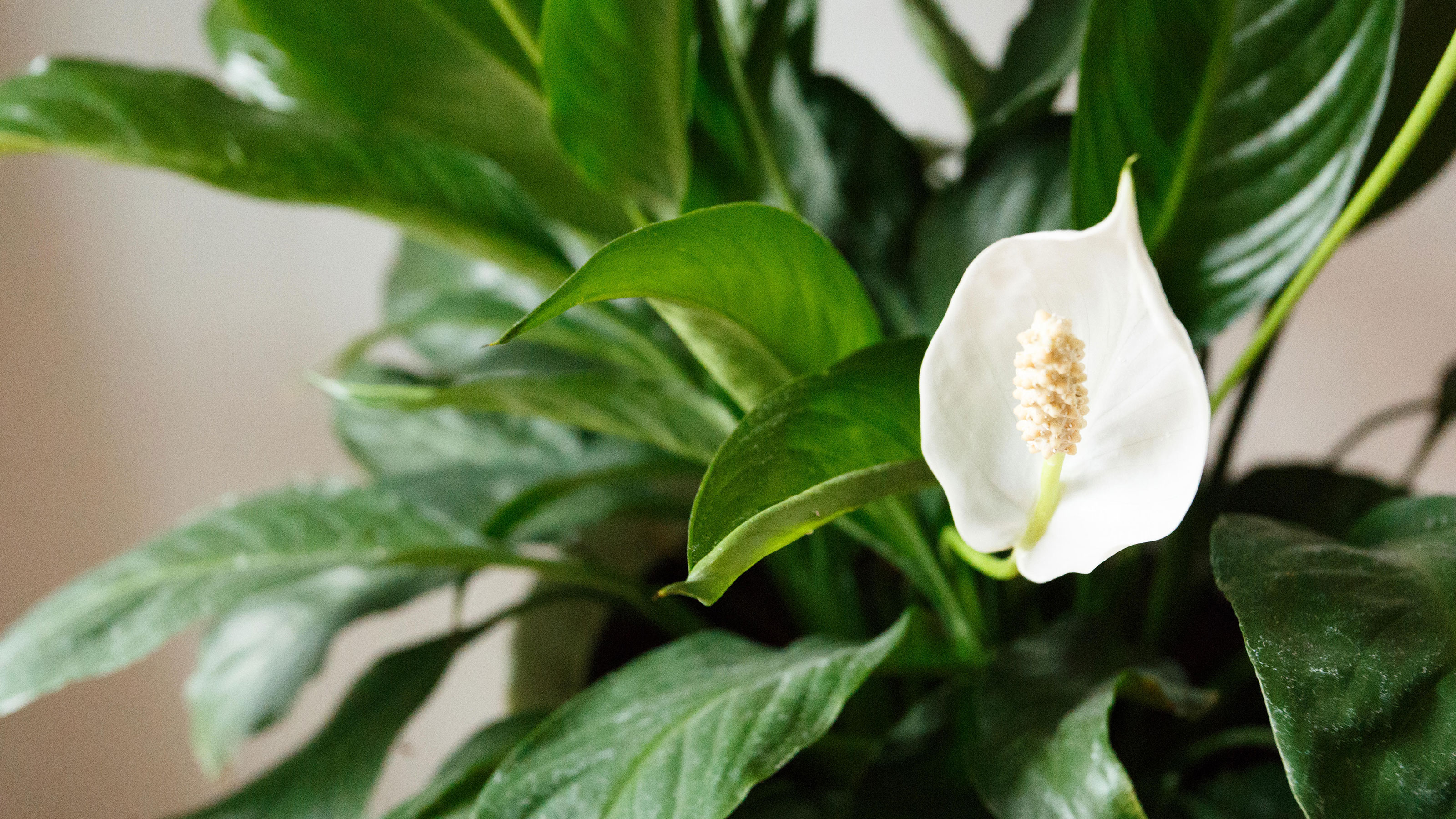

The peace lily comes from South America and its lush and glossy leaves and beautiful white flowers look suitably tropical for a plant with these origins. The flower isn’t really a flower at all but a ‘spathe’ (Greek for leaf) and this is where it gets its botanical name Spathiphyllum from.
It’s one of our favorites as there aren’t that many houseplants that bloom happily in low light levels. Maybe it's the name but this plant will bring a sense of harmony to your space. It also has the ability to purify the air in your home by removing toxins. This is another reason for putting it at the top of your houseplant wish list.
It's easy-to-grow nature makes it one of the best indoor plants for beginners too. But even though the peace lily is low maintenance and super easy to cultivate, make sure you max up your plant’s potential by following our expert tips.
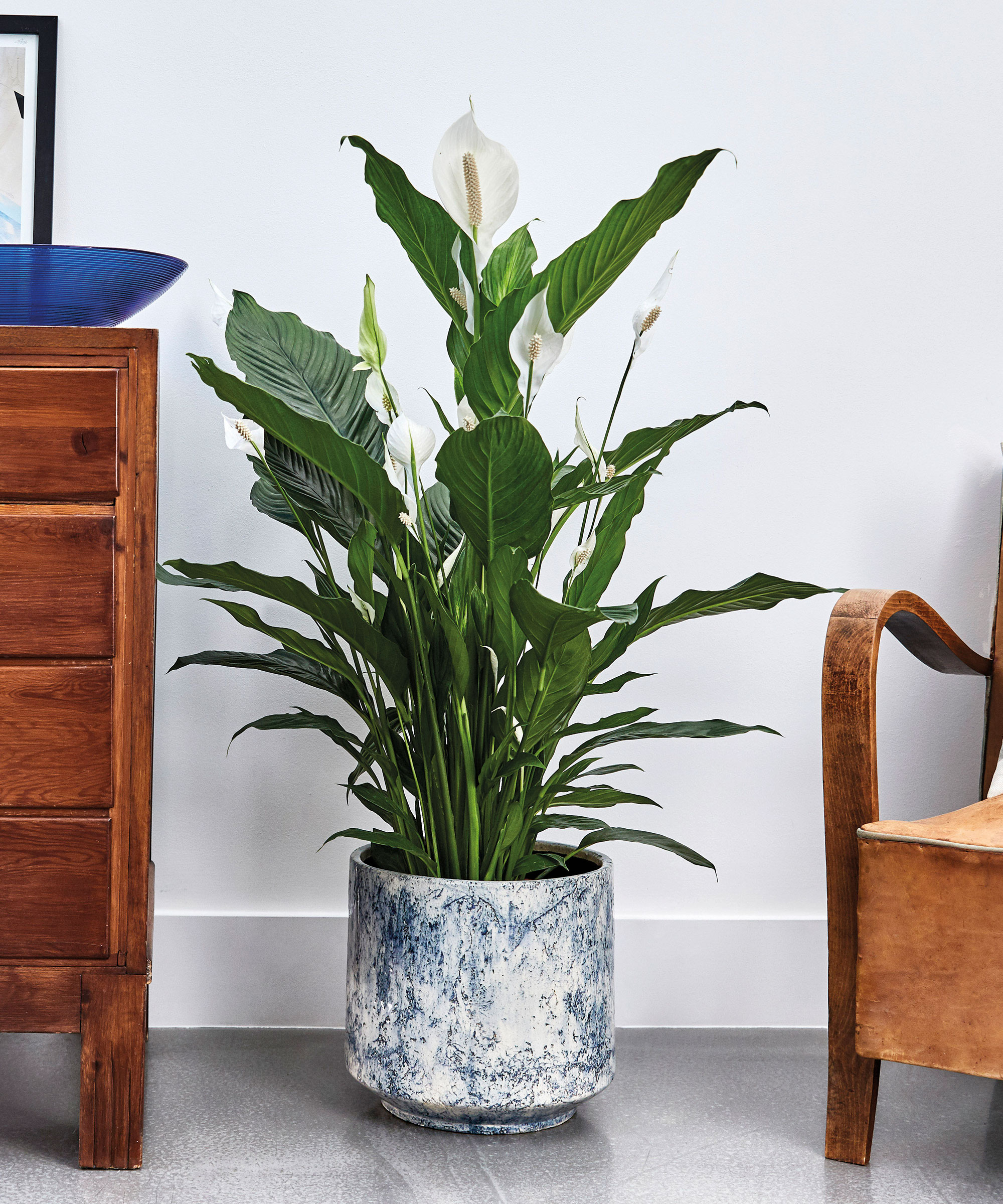
Peace lilies can make a striking addition to any space
Top tips for peace lily care
Why is the peace lily so popular for indoor garden ideas? 'Quite simply, it's stunning and a real showcase plant,' says The Stem founder James Folger. 'It responds so well with very little care, and it will grow and grow and continue to flower. The beautifully elegant white flowers contrast against the deep green of the leaves. It's such a rewarding plant.'
From putting it in its preferred spot to how much water it likes, we’ve rounded up all the expert tips you need on how to care for your peace lily so you can get the most from your beautiful plant.
1. Ensure your peace lily gets enough water
Unlike snake plants, this is one houseplant that can drink a lot, but don’t leave it sitting in soggy conditions for days on end as this reduces the available oxygen in the soil. Let your peace lily dry out between watering, but don’t let it wilt, which will quickly cause the leaves to turn yellow.
‘Keep the soil of your peace lily constantly moist but not wet to enjoy it at its best,’ says James Folger. Your peace lily will enjoy weekly waterings, but it will let you know when it needs water as the leaves will start drooping. During the winter months cut back to watering fortnightly.
These plants are not huge fans of tap water, particularly if you live in a heavily chlorinated area, so it’s always a good idea to let tap water stand before using it so that the chlorine can evaporate a little. Alternatively use rainwater from a water butt. The peace lily is also not keen on very cold water, which will shock the plant, so using room temperature water is best.
Keep the compost damp all year round and water more often in summer. If you find your peace lily drooping, give it a thorough watering and it will soon revive, generally after around 12 hours or so.
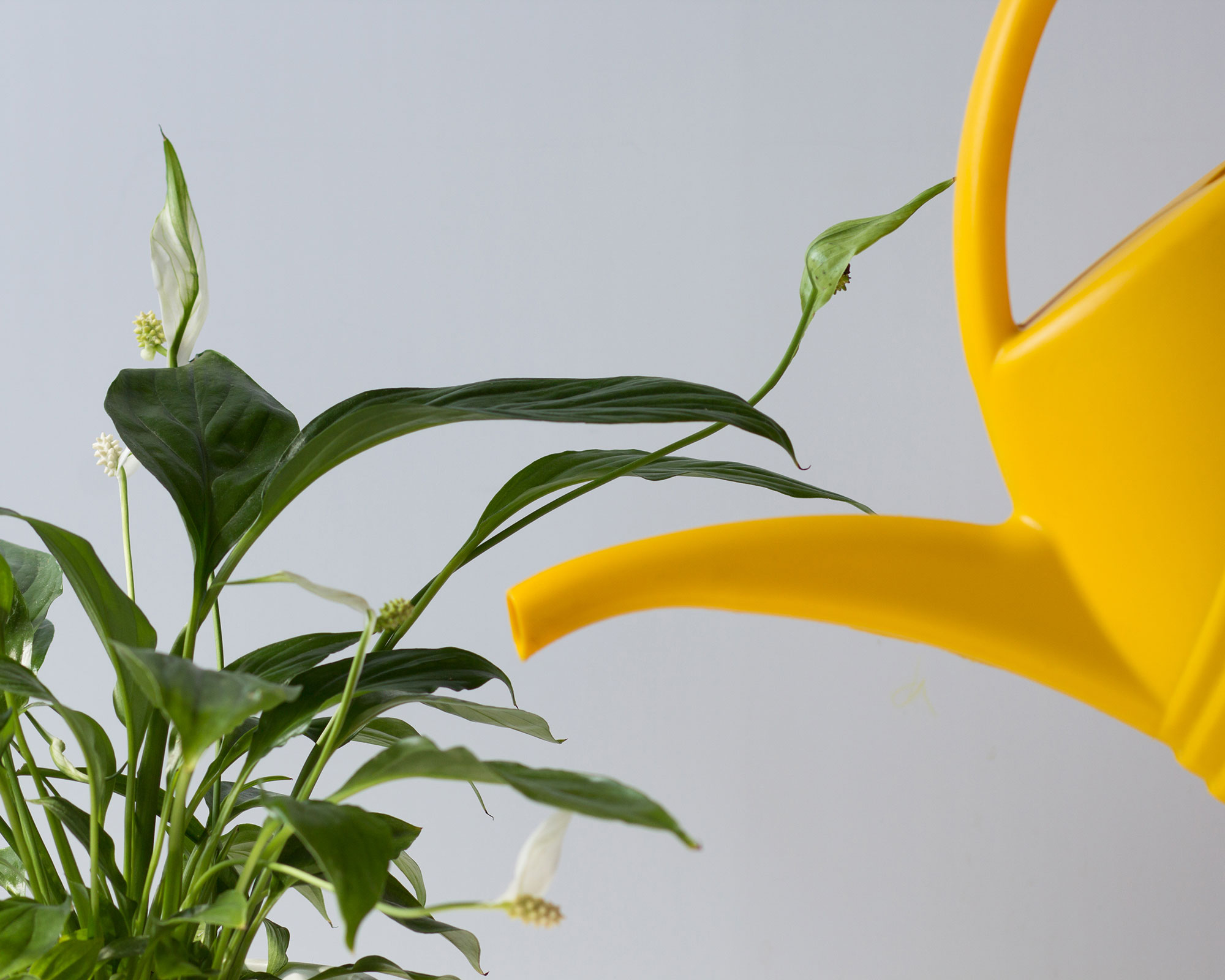
Room temperature water is best for your peace lily
2. Avoid direct sunlight
If you've ever wondered 'why is my peace lily turning yellow', then chances are you haven't got it in the right position in your home.
It's best to keep your peace lily out of direct sunlight as it does best in a lightly shaded spot. In fact these plants can withstand very low light levels but this doesn’t necessarily mean it's ideal for them. If you want flowers to bloom they need bright, but not direct, light. While it can cope with lower light, you may notice the peace lily does not flower in these conditions.
It’s especially important to keep your peace lily out of the direct sun in midsummer to avoid the leaves getting burnt and scorched, and the flowers drying out. The same care rules apply for Swiss cheese plants, so bear this in mind if you also have these in your houseplant collection.
Make sure your peace lily is kept at a minimum winter temperature of 50˚F (10˚C), although it can survive if the temperature drops a little lower. ‘The peace lily comes from the tropics,’ says James Folger, ‘so make sure you keep it away from drafts and doors.’
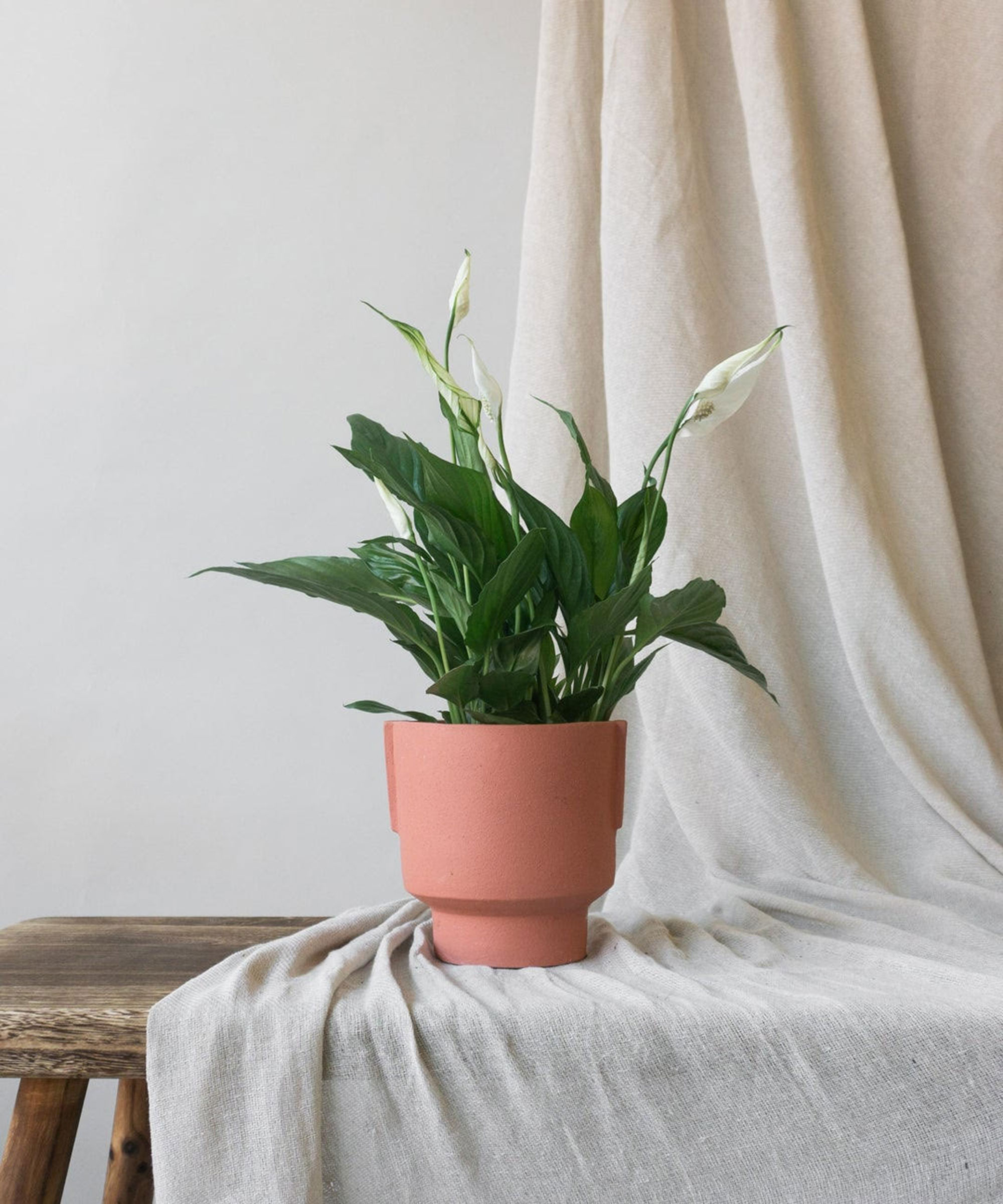
Peace lilies should thrive in bright but indirect light
3. Keep conditions humid
‘Native to the steamy jungles of Bolivia, peace lilies thrive in high humidity so mist yours regularly or keep it in a bathroom or kitchen,’ says James Folger. ‘As more and more people seek plants to add to their bathrooms to create a sense of sanctuary we find that plants such as the peace lily, which thrives in humidity, are getting more and more popular. We’re all looking for flowers that make us feel calm, and the peace lily seems to do that.’
This works for us too as we love the idea of introducing lots of the best plants for bathrooms to our space to create a spa-like sanctuary. Your peace plant will certainly benefit from the steamy atmosphere generated by the shower in the bathroom.
Mist the leaves regularly to replicate its native jungle-like environment and it will return the favor with lots of lush leaves.
Putting a tray with moistened gravel underneath your peace plant will also help boost humidity levels. Like prayer plants the peace lily will thrive in the humid conditions of a terrarium too.
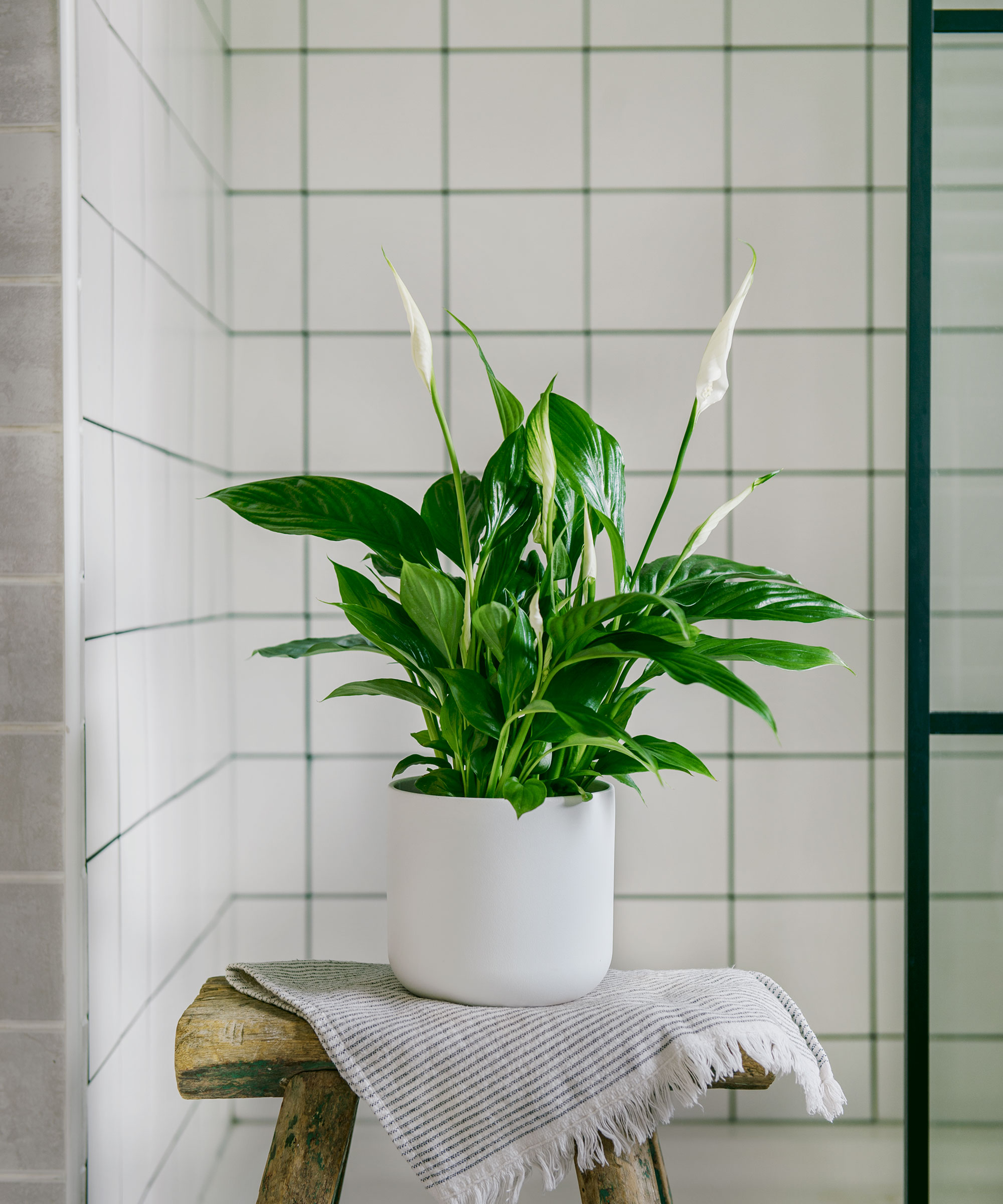
A peace lily is a brilliant choice for a bathroom as it will enjoy the high humidity levels
How does a peace plant purify the air?
The peace lily has emerged as one of the best air purifiers for cleaning indoor air. It's so good at the job that NASA has even put it on its list of Top Ten Household Air Cleaning Plants.
It's known to break down toxic gases such as benzene, formaldehyde, xylene, toluene and trichloroethylene. This means it's one of the best plants for bedrooms as it will purify the air while you sleep. They can also reduce mold spores, so can help prevent the growth of mildew in bathrooms.
‘You’d be forgiven for thinking the peace lily may be difficult to care for, judging by its stunning appearance, however it's one of the best low maintenance indoor plants and also a fantastic air purifier,’ says Jo Lambell of Beards & Daisies. 'According to the Chinese art of Feng Shui, peace lilies can cleanse the energy of a room, bringing peace and tranquility to your home, too.’
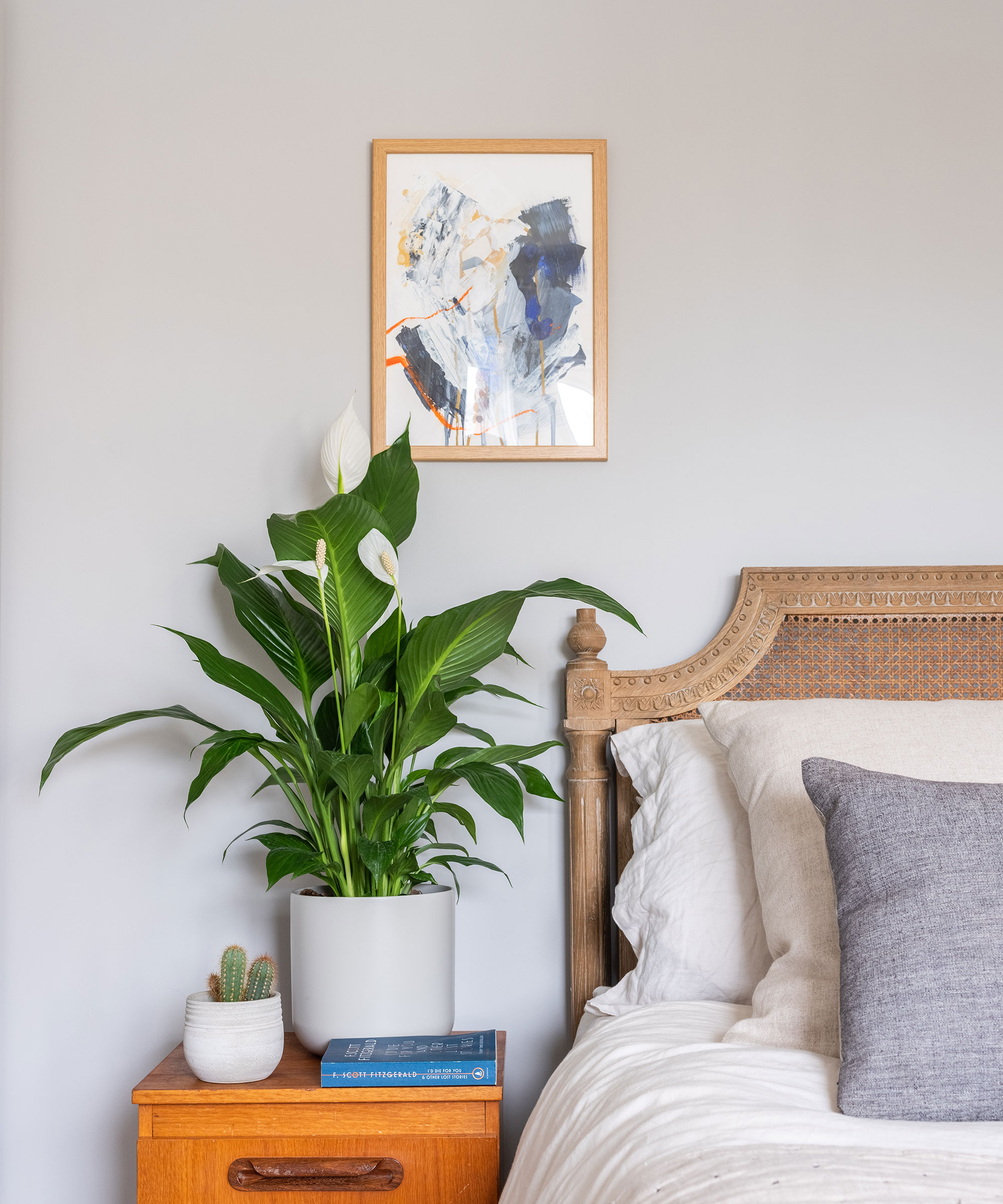
A peace lily can help to purify the air in a bedroom
How do I look after the leaves on a peace lily?
As with any houseplants with highly glossy leaves, dust will show up on your peace lily. It will benefit from being spritzed with lukewarm water to keep the leaves clean. Or put your plant in the shower and give it a gentle spray with warm water.
Wipe the leaves with a damp cloth occasionally to help them retain their glossy appearance. Misting the foliage regularly also helps to keep leaves looking their best.
If the leaves aren't looking their usual glossy self check the undersides of them for any pests. Peace lily plants rarely suffer from invaders but this is where you'll find any bugs if there is a problem. If you see any small black winged insects you probably need to find out how to get rid of thrips as you may have an infestation that needs dealing with.
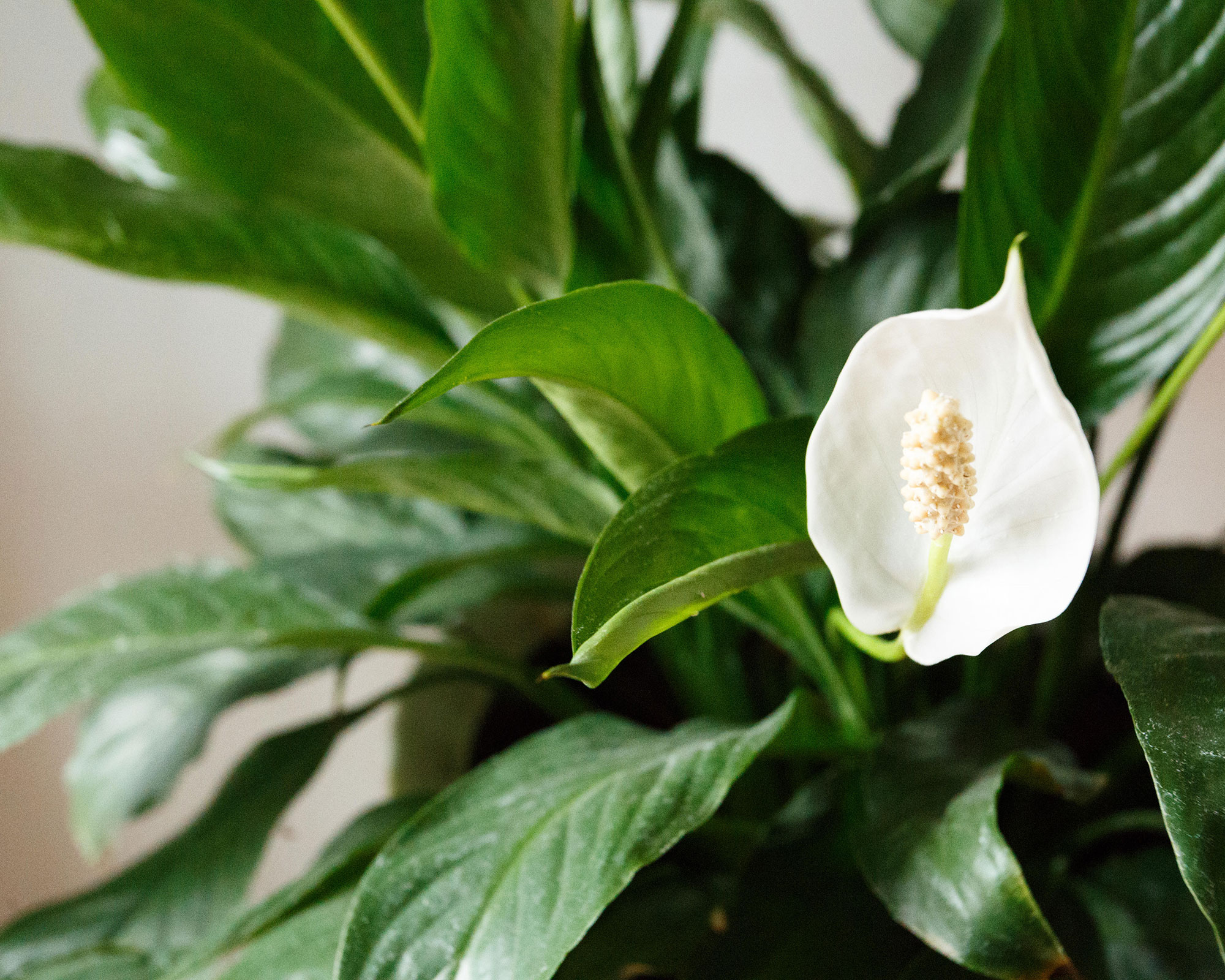
Wipes leaves to remove any dust
Why is my peace lily wilting?
Recurrent wilting, despite regular watering, is probably a sign that your peace lily has outgrown its pot so follow our tips on how to repot a plant and transfer it to a new one with lots of fresh compost. Choose a pot that's no more than a third larger than the root ball, and aim to do this every couple of years. Repotting in spring is best if possible.
‘If the leaves are turning brown or yellow it suggests your peace lily has been exposed to too much light,’ says Beth Chapman of Leaf Envy. ‘Meanwhile drooping leaves indicate your peace lily has been under-watered.’
Some yellow peace lily leaves are normal, so simply remove them to make room for fresh leaf growth. Overwatering may also lead to yellowing of the leaves, so let the soil dry out a bit and see if there's an improvement.
Brown edges on the leaves could indicate that your peace lily is getting too much direct sunlight. Simply move the plant to somewhere more shaded.
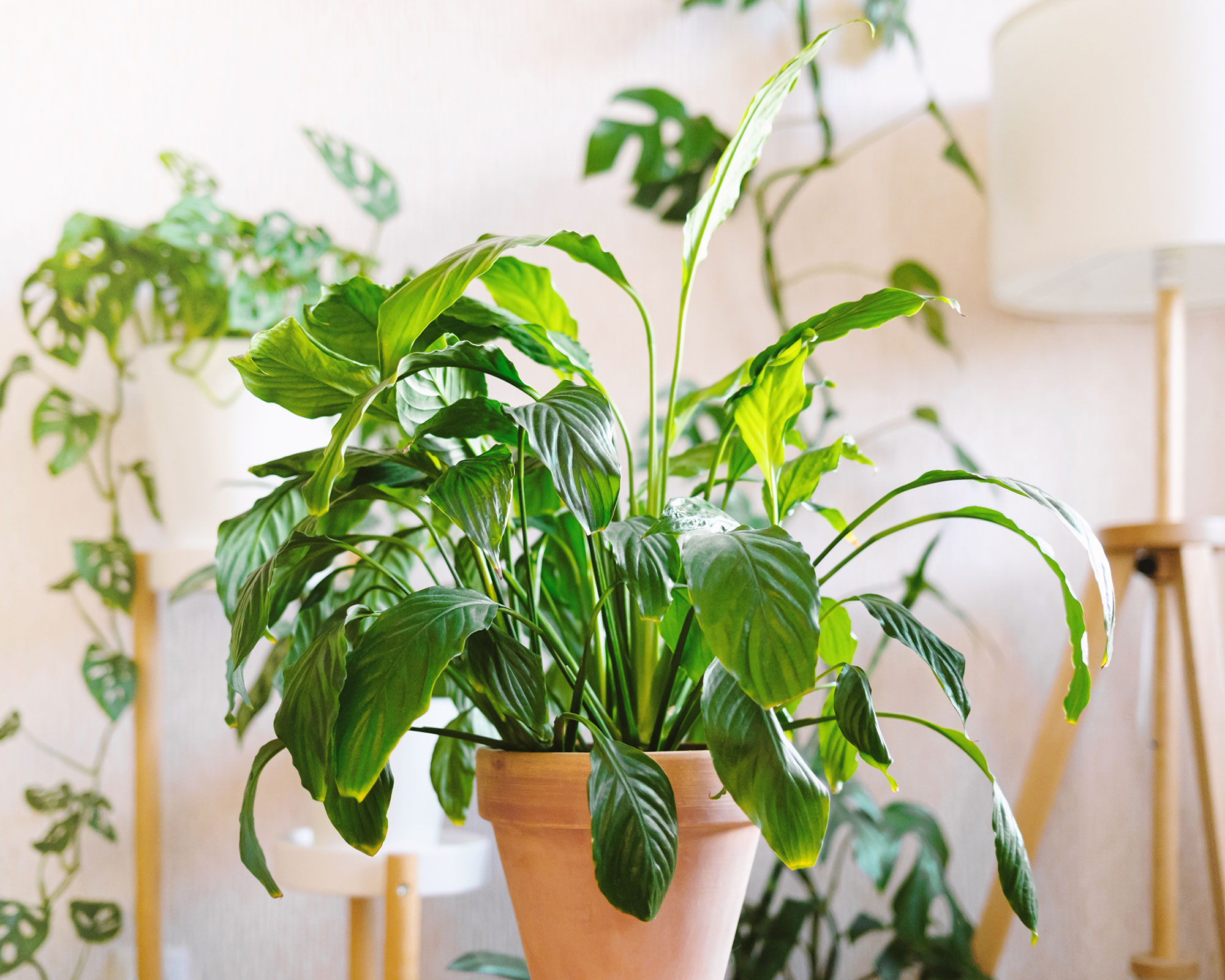
Wilting leaves can mean your peace lily needs repotting
What helps peace lilies grow?
The peace lily grows quickly and makes a lovely bushy plant but it does best when slightly pot bound although not if the pot is too small as it will dry out too quickly.
The needs of the peace lily when it comes to food are low. Over-fertilizing plants will burn the roots. ‘The best time to feed a peace lily is when the plant is actively growing or producing blooms, so spring through until summer,’ says Jo Lambell. ‘As a rough guide, two or three feedings throughout the growing season is plenty.’ Use a general houseplant fertilizer.
Find out how to grow aloe vera for another easy houseplant that doesn't need a lot of feeding.
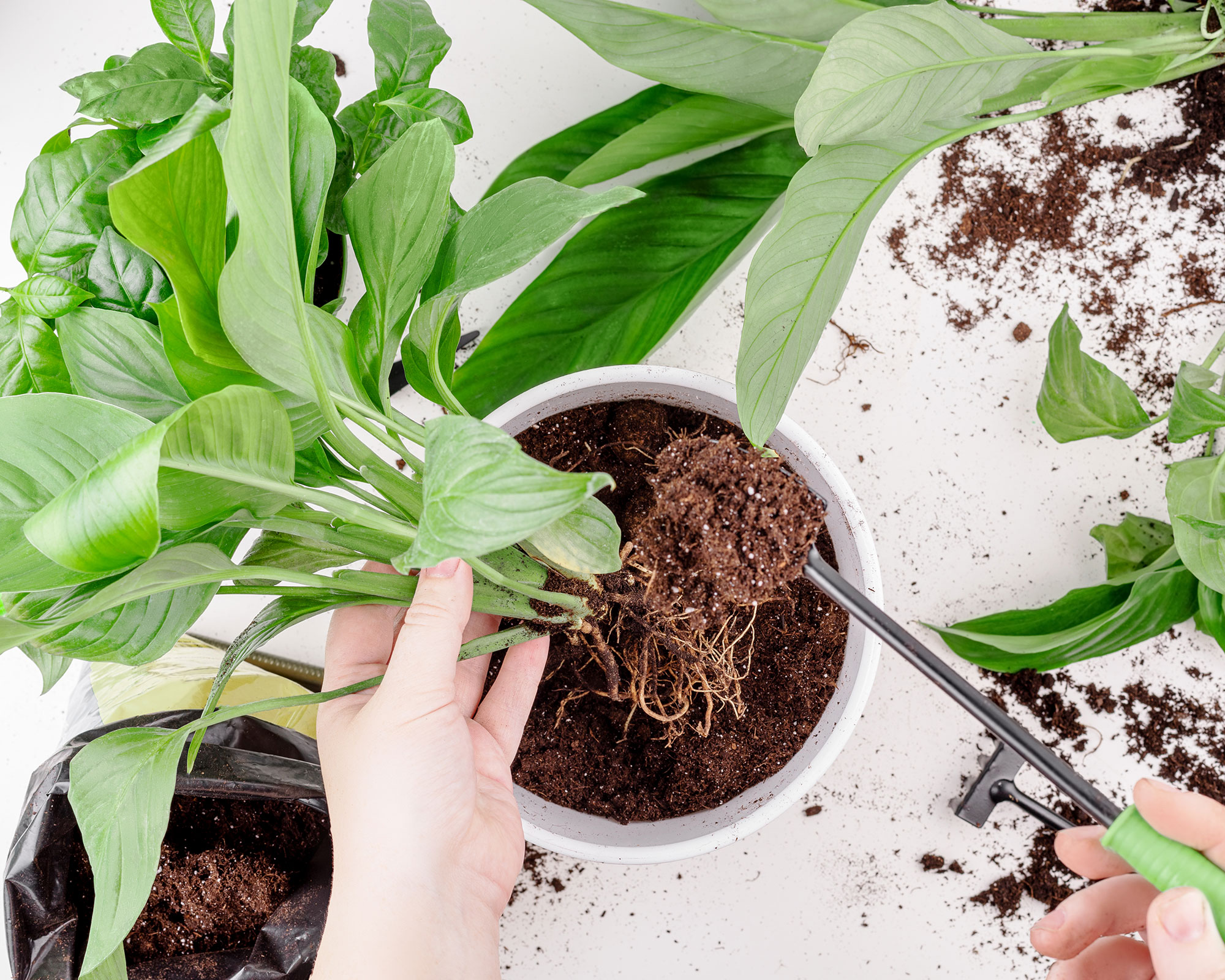
Repotting your plant when it outgrows its container will help it to thrive
How do I get my peace lily to bloom?
Peace lilies can be tricky when it comes to blooming. Even the healthiest plants don't bloom outside of their natural rainforest environment. They are often in bloom when you buy them though so follow a few tips to keep the flowers coming.
Your best bet is to provide it with consistent conditions that it thrives in, especially when it comes to humidity, diffused light and consistent fertilizer.
And remember that the more you deadhead flowers the more you'll get.
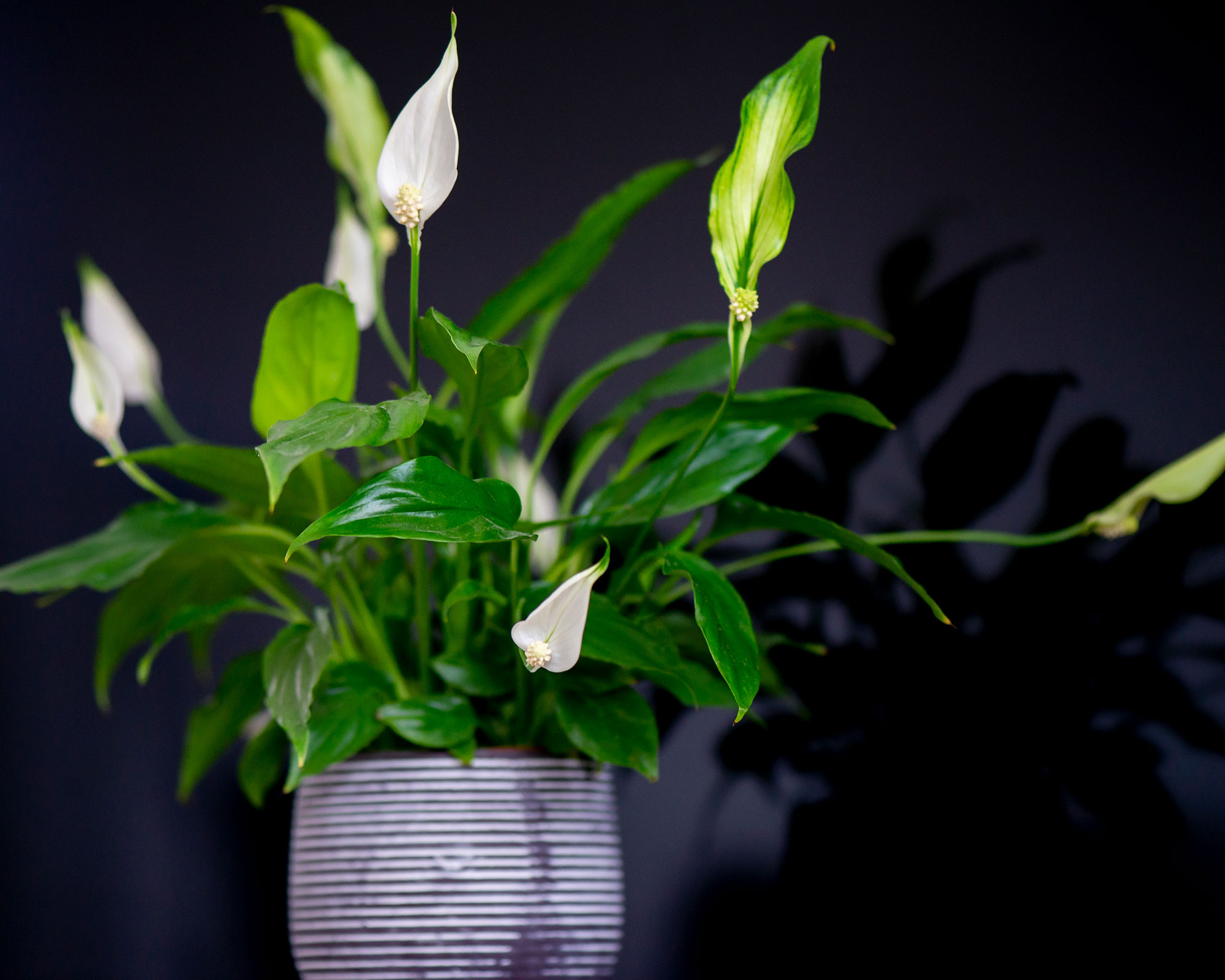
Is the peace lily toxic?
‘Peace lilies are toxic to pets and small children, so it may be best to keep them out of reach of tiny fingers or paws,’ says Patch Plants Plant Doctor Richard Cheshire.
If you have pets in your home, make sure you're up to speed with the most poisonous plants for dogs and plants that are poisonous to cats to keep them safe from harm.
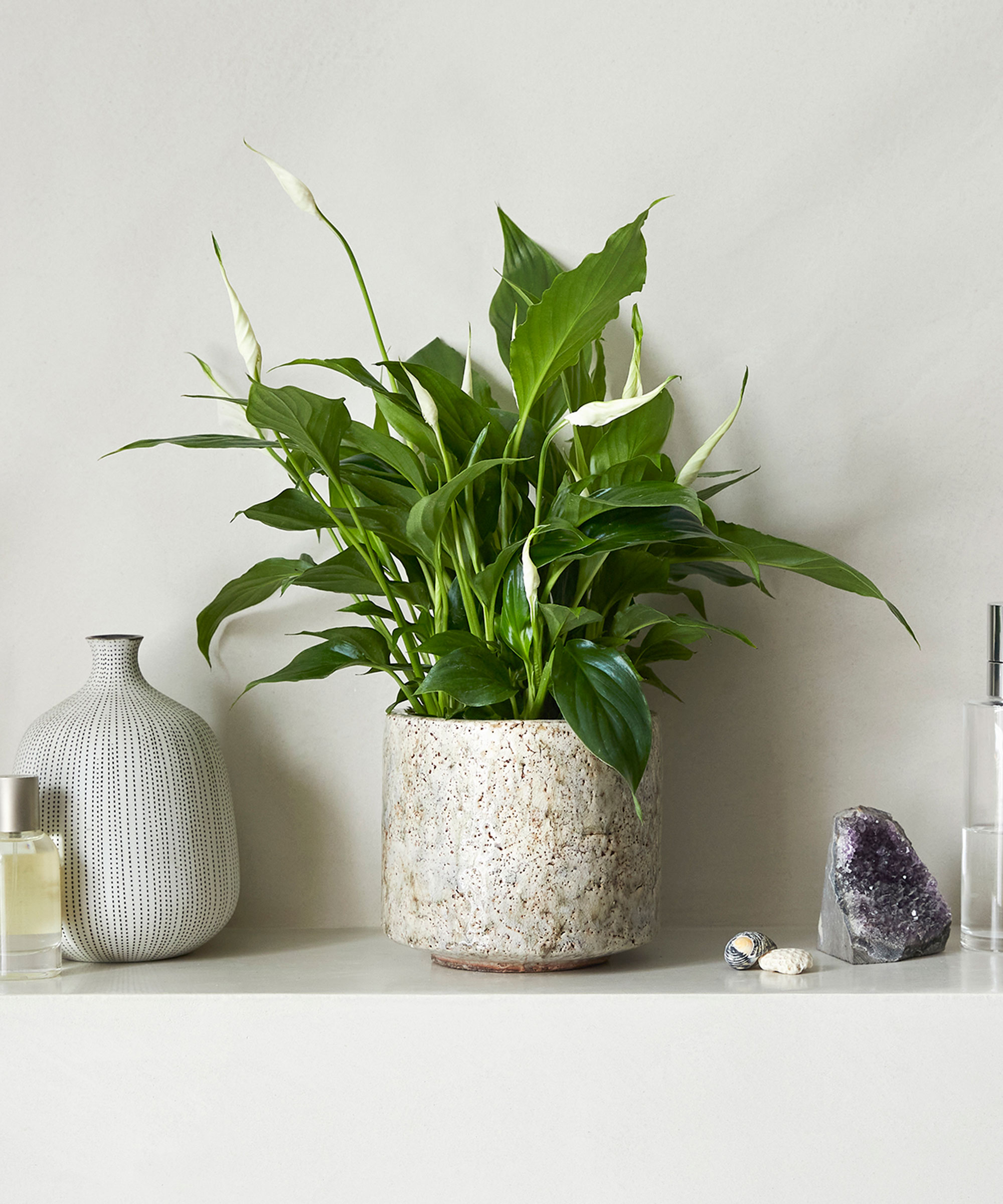
Where to buy peace lilies
Now you know about peace lily care it's time to buy one. They're widely available in garden centers and grocery stores, but there's also a big choice online. Take the easy shopping option with our quicklinks below.
Shop peace lily plants in the US:
Shop peace lily plants in the UK:
- Shop peace lily plants at Amazon
- Shop peace lily plants at Beards & Daisies
- Shop peace lily plants at Crocus
- Shop peace lily plants at Patch Plants
- Shop peace lily plants at Primrose
- Shop peace lily plants at Leaf Envy
- Shop peace lily plants at Suttons
- Shop peace lily plants at The Stem
- Shop peace lily plants at You Garden

Lifestyle journalist Sarah Wilson has been writing about gardens since 2015. She's written for Gardeningetc.com, Livingetc, Homes & Gardens, Easy Gardens and Modern Gardens magazines. Having studied introductory garden and landscape design, she is currently putting the skills learned to good use in her own space where the dream is establishing a cutting garden.
